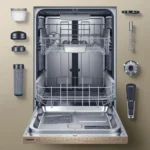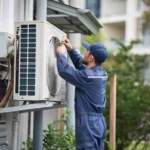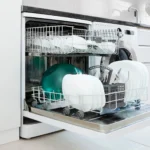KitchenAid dishwashers are known for their reliability and efficient performance, but like any appliance, they can encounter issues over time. Whether your dishwasher isn’t drying dishes properly, taking too long to complete a cycle, or having trouble draining, this comprehensive guide will walk you through everything you need to know. From understanding common problems to diagnosing and fixing them, we’ve got you covered.
Appliance Repair Services In Southern California:
Microwave Repair Service in Southern CaliforniaWasher Repair Service in Southern California
Freezer Repair Service in Southern California
Dishwasher Repair Service in Southern California
Refrigerator Repair Service in Southern California
Common Problems with KitchenAid Dishwashers
Not drying dishes: Failure to dry dishes properly is often linked to issues with the heating element or ventilation.
Water not draining: A blocked drain or faulty pump can cause water to remain at the bottom of the dishwasher.
Dishwasher cycle taking too long: A variety of factors, such as clogged filters or malfunctioning sensors, can cause extended wash cycles.
KitchenAid Dishwasher Not Drying Dishes
What causes a KitchenAid dishwasher not to dry dishes?
Several factors can cause a KitchenAid dishwasher to fail to dry dishes: If it’s not working, your dishes will remain wet.
Improper Venting: If the venting system is clogged or blocked, moisture can remain inside the dishwasher, preventing dishes from drying.
Rinse Aid Problems: The use of rinse aid helps improve drying performance.
Overloading the Dishwasher: If the dishwasher is packed too tightly, air can’t circulate properly, preventing effective drying.
How to Fix Drying Problems in Your KitchenAid Dishwasher
Use Rinse Aid: Refill the rinse aid dispenser, which improves drying by reducing water spots and helping water flow off dishes.
KitchenAid Dishwasher Cycle Duration
How long does a KitchenAid dishwasher cycle last?
The typical cycle time for a KitchenAid dishwasher ranges from 1.5 to 2.5 hours, depending on the cycle selected. Standard cycles (e.g., Normal or Heavy Wash) usually last around 2 hours, while Quick Wash cycles are shorter, taking about 1 hour.
Why does my KitchenAid dishwasher take so long to wash dishes?
Several reasons might explain why your dishwasher is taking longer than usual:
Eco-friendly Cycles: Some KitchenAid models come with energy-efficient settings that take longer to clean dishes.
Clogged Filters: A dirty filter can slow down the water flow, making the dishwasher work harder to clean dishes.
How to Speed Up Your Dishwasher Cycle Clean the Filters:
Regularly clean the filter to ensure water flows freely.
Use Quick Wash Cycle: If you’re in a hurry, use the Quick Wash setting to clean lightly soiled dishes faster.
KitchenAid Dishwasher Maintenance & Troubleshooting
How to Clean Your KitchenAid Dishwasher. Follow these steps:
Clean the Filter: The filter traps food particles, so clean it regularly to avoid clogs.
Wipe Down the Door Seal: A dirty door seal can trap moisture and cause mould growth, leading to unpleasant odours. Clean it with a damp cloth. Clean the Spray Arms: Running Diagnostics on Your KitchenAid Dishwasher
Here’s how to run diagnostics on most KitchenAid dishwashers:
Close the Door:
- Ensure the dishwasher door is properly latched.
- Wait for the Diagnostic Mode: The dishwasher will enter diagnostic mode, and the lights on the control panel will begin flashing.
- Follow the Prompts: The dishwasher will cycle through various tests, such as checking the water intake, draining function, and drying capabilities.
- Note the Error Codes: If there is an issue, the dishwasher will display an error code.
- Look up the code in the manual or on the KitchenAid website to determine the problem. If the diagnostic test reveals an issue that requires a part replacement, refer to the section on dishwasher parts below.
KitchenAid Dishwasher Parts and Repairs
Common Replacement Parts for KitchenAid Dishwashers
Dishwasher Spray Arms: These can become clogged or broken, affecting the washing performance.
Control Board: If your dishwasher doesn’t start or complete cycles, a malfunctioning control board might be the issue.
Door Seal: A damaged seal can cause leaks, leading to water damage and poor washing performance.
When to Call a Professional for Repairs
If the diagnostic test points to a major malfunction or you are unable to identify the issue, it’s best to call a professional. Here are some signs that professional help is needed:
Electrical issues: If the dishwasher isn’t turning on, that requires a professional.
Water not draining: While you can check for blockages, if the pump or motor is malfunctioning, a professional technician should handle the repair.
Persistent leaks: If your dishwasher continues to leak even after checking the door seal and hoses, it may indicate a more serious issue that needs professional intervention.
Are KitchenAid dishwashers reliable?
Yes, KitchenAid dishwashers are generally considered reliable. Consumer reviews often highlight the quiet operation and effective cleaning, though like any appliance, issues can arise over time. With proper maintenance, your KitchenAid dishwasher can last for many years without significant problems.
Frequently Asked Questions (FAQs):
What is the normal life expectancy of a dishwasher?
The normal life expectancy of a dishwasher is around 9 to 12 years, although this can vary depending on usage, maintenance, and brand.
What causes a KitchenAid dishwasher to take too long to wash dishes?
Dishwashers that take too long to wash may have issues with clogged filters, incorrect cycle settings, or a malfunctioning water heater. Also, eco-friendly cycles designed to save energy can sometimes result in longer wash times.
How do I diagnose a dishwasher problem?
To diagnose a problem with your KitchenAid dishwasher:
Check the error codes: If your dishwasher has a diagnostic mode, check for any error codes that indicate specific issues.
Inspect common problem areas: Check the door seal, filters, drain hose, and spray arms for blockages or damage.
Test the cycle: Run a cycle without dishes to see if the issue persists, as this can help isolate the problem.
Conclusion
By understanding common issues like drying problems, long cycle times, and draining issues, you can often identify and solve the problem before it becomes a major repair. Remember, performing regular maintenance, such as cleaning the filters and running diagnostic checks, can greatly extend the lifespan of your dishwasher.

Eric
Eric is the founder and lead repair expert at Appliance Repair Southern California. With 17+ years of experience, he has built a reputation for providing fast, reliable, and high-quality repair services across Southern California. His expertise covers a wide range of appliances, including refrigerators, ovens, dishwashers, and washing machines. Eric is committed to exceptional customer service and ensuring every repair is done right the first time. Under his leadership, Appliance Repair Southern California continues to be a trusted name in the industry.






